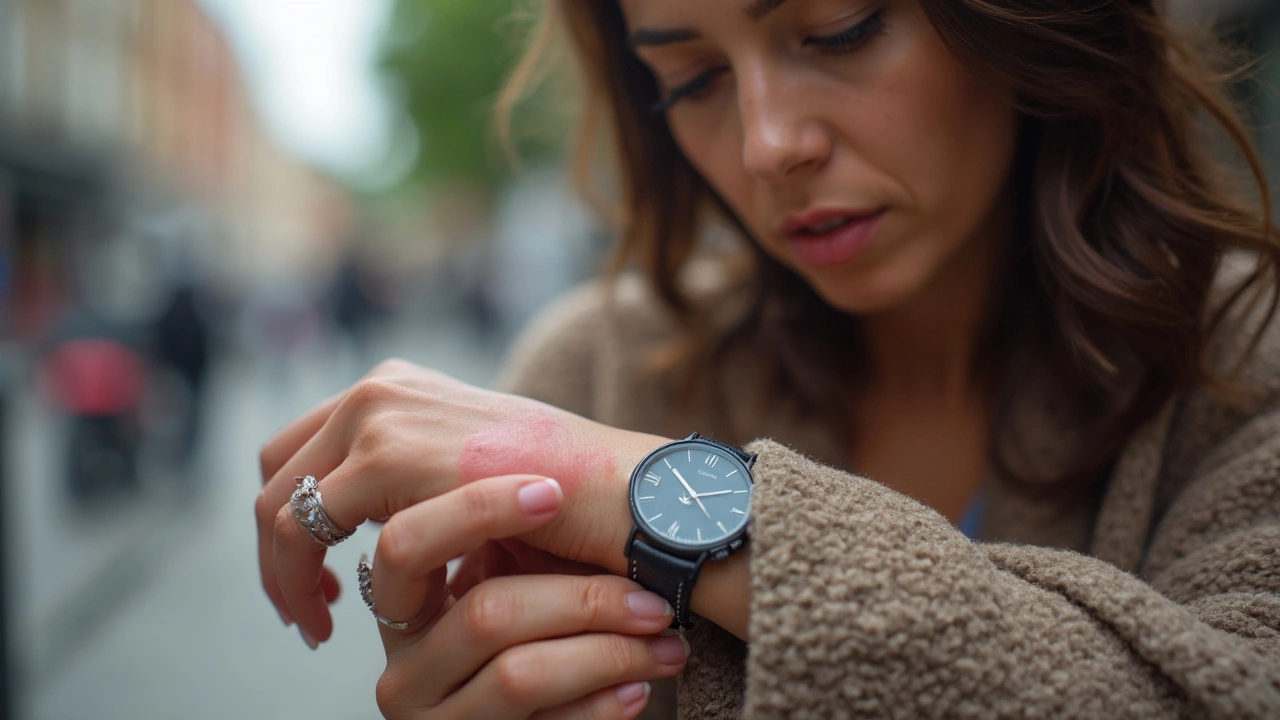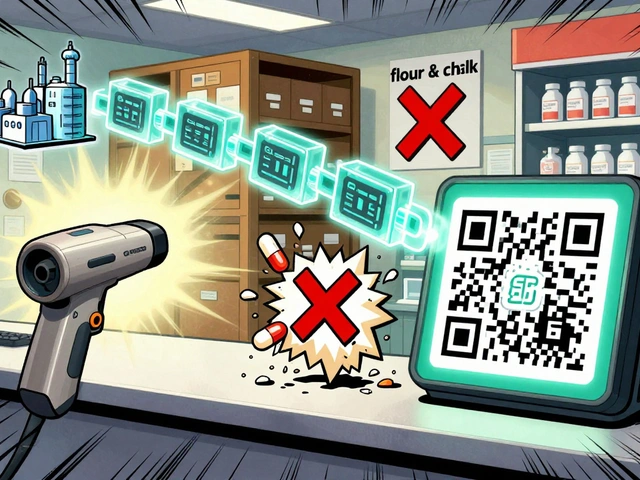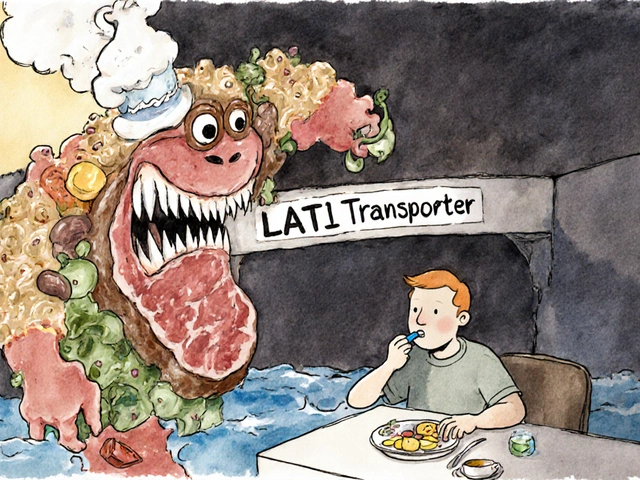You grab your keys, slip on a cool pair of earrings, or buckle up a belt, and next thing you know your skin breaks out in an itchy, angry rash. That’s no random coincidence. Nickel — found everywhere from coins to your favorite smartphone — is a sneaky culprit behind contact dermatitis, and it creates a surprising amount of grief for millions. Studies suggest up to 17% of women and 3% of men develop nickel allergy at some point, making it one of the most common causes of persistent skin problems worldwide. Yet most people have no clue what’s setting them off, and the answer might be hiding in plain sight: their everyday stuff contains more nickel than they realize.
Why Nickel Causes So Much Trouble for Sensitive Skin
If your skin is the moody type, reacting to what seems like harmless metals, chances are you have a nickel allergy. Nickel allergy doesn’t come from birth; it builds up over time. Any time your skin regularly touches items like jewelry, belt buckles, glasses frames, or even the buttons on your jeans, your immune system can learn to see nickel as a threat. The result? Your skin behaves like there’s a full-blown invasion, throwing out an itchy, red flare-up as defense.
Nickel ions love to escape from metal surfaces and latch onto skin proteins. Your immune system, trying to be helpful, remembers this interaction and gets more dramatic every future time it happens. This memory is why someone can wear the same ring for months before developing a rash, and then suddenly become sensitive for life. Why are women more likely to have this allergy? Piercings are a big reason; when you add holes to skin, you increase direct exposure to nickel, and the risk for lifelong sensitivity goes up significantly.
Once your body gets triggered, the reactions can range from mildly itchy to blistering or even weepy rashes. Not just where the contact happened, either — for some, the rash spreads beyond the original contact zone. And don't think it’s just jewelry: mobile phones, zippers, coins, eyeglass arms, keys, kitchen utensils — even dental braces might hold enough nickel to spark trouble. Just to put it in perspective: the European Union has strict regulations limiting the amount of nickel that can be released from products touching the skin. The US is playing catch-up because so many don’t realize how serious the condition can get. See the table below for some surprising sources of nickel:
| Common Item | Potential Nickel Content |
|---|---|
| Cheap jewelry (especially earrings, rings) | High |
| Watchbands | Medium to High |
| Belt buckles | Variable |
| Pant snaps/zippers | Moderate |
| Eyeglass frames | Medium |
| Coins (nickels, some Euros, others) | High |
| Keys | Medium |
| Mobile phone cases/buttons | Can be High |
Living with nickel allergy isn’t about being fragile — it’s about your immune system doing too good a job with a tiny, common metal. Understanding why your skin reacts is the first step toward beating it at its own game.
Nickel Allergy and the Reality of Contact Dermatitis
So what does contact dermatitis from nickel actually look and feel like? The classic symptoms aren’t subtle: redness, swelling, intense itching, dry patches, maybe even fluid-filled blisters if things get really irritated. The rash usually matches the shape of what you touched — a ring, earring, or cell phone edge. With repeated exposure, your skin can become thickened, scaly, and cracked. Scratching isn’t just tempting; it's a nearly automatic response, but it only makes things worse by breaking the skin and possibly welcoming bacteria into the mess.
Dermatologists don’t guess when it comes to nickel allergy. Patch testing is the gold standard: a tiny patch with nickel is taped on your back for 48 hours, and if you see a rash forming, there’s your culprit. In 2023, a study in Boston found that nickel was responsible for almost 35% of all positive patch test reactions among adults getting checked for skin allergies. That’s a huge chunk of people, showing just how widespread this reaction is.
The weird thing? You can eat foods that naturally contain nickel (like chocolate, nuts, or certain beans) and not always react, unless your allergy is severe — then you might break out in places nowhere near your jewelry. Ever notice a rash on your hands after handling coins for long periods? Or behind your ears after wearing sunglasses with metal arms? That’s nickel allergy in real life.
Nickel dermatitis doesn’t play fair. It can show up weeks, months, or even years after your first nickel encounter. And it can stick around for days or weeks even after you break contact. Some unlucky folks with heavy exposure or extra sensitive skin end up needing prescription creams, oral steroids, or even immunotherapy just to get back to normal. That’s why recognizing the early warning signs can save you a world of trouble.
For people with jobs involving lots of nickel exposure — think hairdressers, cashiers, or machinists using metal tools all day — this allergy can really impact daily life. Gloves help, but sweat trapped under gloves sometimes makes rashes even worse, creating a real catch-22. No wonder so many who deal with contact dermatitis from nickel wind up swapping career paths or hunting for new tech gadgets made from safer materials.

Smart Ways to Avoid Nickel and Protect Your Skin
If you know nickel sets you off, your top priority is figuring out where it hides in your world. Here’s the twist: many “hypoallergenic” or “nickel-free” claims on products aren’t regulated, especially in the U.S., so don’t take labels at face value. There are cheap nickel testing kits available at drugstores or online. You swipe a solution onto something, and if it turns pink or red — bingo, there’s nickel. This simple test can save a lot of itching regrets.
One trick is to use a clear barrier, like painting the backs of buttons or jewelry with a couple layers of clear nail polish. It’s not a forever fix, but it helps. Stick with stainless steel labeled as “nickel-free” (such as surgical-grade 316L or titanium) for body piercings or earrings, since these metals are far less likely to leak nickel. Swap metal watchbands and belt buckles for leather, fabric, or plastic versions. If your glasses bug you, ask for nickel-free frames next time you buy a pair — many optical shops offer them now.
If you’re stuck handling coins, keys, or tools all day, cotton gloves underneath work gloves can help keep your skin protected and dry. At home, switch to ceramic, glass, or silicone utensils if your hands are always red after washing dishes or cooking. For tech, choose plastic or coated phone cases, and for laptops, stick a thin, clear sticker over metal parts or palm rests. And of course, keep your skin moisturized — drier skin cracks more easily, making it easy for nickel to work its way in.
Food is another sneaky source, but extreme diets are rarely necessary unless your allergy is severe. If you notice rashes without direct nickel contact, track what you’ve eaten: oats, canned foods, chocolate, teas, and some legumes are high in nickel naturally. Some doctors recommend a trial “low-nickel” diet for really stubborn or widespread dermatitis; ask your allergist before making any drastic food changes, though.
Piercings are a big risk factor, especially with cheap earrings. If you must wear studs, dull-colored titanium or real gold (14k and up) is usually safer. Skip costume jewelry for long-term wear, and keep a close eye on younger kids and teens — their risk for new allergies is higher if they use lower-cost earrings.
If a rash hits, resist the urge to scratch, since broken skin is more likely to get infected. Cool, wet compresses can calm down redness, and over-the-counter hydrocortisone helps with mild itching. For serious flare-ups or spreading rashes, see a doctor or a dermatologist for a stronger prescription. Sometimes an oral antihistamine can calm the itching too.
Living with Nickel Allergy: Real-Life Tricks, Facts, and Hope
Living with nickel allergy isn’t as lonely as it sounds. Lots of folks are dealing with it — just visit a nickel allergy forum or compare notes with fellow jewelry-wearers. One interesting fact: Denmark and Sweden saw a sharp decrease in new nickel allergies among young people after strict nickel-release laws hit the books. That's proof that limiting exposure early works. On the other hand, places with cheap jewelry and fewer regulations still see new cases piling up, especially among teens getting their first piercings.
Everyday hacks go a long way. If you love music or gaming, grab plastic headphone covers to avoid metal against your ears. Sports fans can wrap athletic tape over the metal bits that touch skin, like watch casings or zippers. If you’re on the job, ask your employer about “nickel-safe” tools or handle covers. For parents, check toys for metal fasteners or battery covers — young kids pop things in their mouths, and nickel allergy can show up even in toddlers with enough exposure. Awareness is the best weapon.
Some people wonder if they can “outgrow” this allergy. Sadly, it usually sticks around for life, and reactions may get worse with age. But it’s not all doom and gloom. New coatings for electronics and jewelry, better safety standards, and growing awareness are making life easier for those affected. Scientists are even testing creams that block nickel from binding to the skin and considering allergy shots for the worst cases — but those are still years from hitting shelves for everyone.
Anyone who battles contact dermatitis from nickel knows just how frustrating it is to have your skin react to things you can’t always control. But with the right info, a few smart product swaps, and a little detective work, most folks can keep flare-ups at bay. If you suspect nickel allergy, patch testing is the fastest way to know for sure. And if you already know you’re sensitive, being picky with what touches your skin isn’t a quirk — it’s a superpower for keeping your skin clear and happy.













14 Comments
Never knew nickel was in so many things. My phone case gave me a rash last summer. Swapped it for silicone and boom - no more itching. Simple fix.
THIS IS A GOVERNMENT COVER-UP. They know nickel is in EVERYTHING - phones, keys, even your damn water pipes - and they’re letting it slide because corporations make billions off cheap metals. They don’t want you to know you’re being slowly poisoned by your own wallet. I tested my bra clasp. Pink. I cried. They’re coming for your skin next.
Interesting how the West treats this like a personal problem when it’s really a systemic failure. Why should I have to buy $50 titanium earrings because the state won’t regulate what’s sold in dollar stores? In Nigeria, we just use plastic beads - no drama. Maybe the solution isn’t more nail polish, but less capitalism.
Y’all, I used to scratch my wrists raw from my watchband. Then I found those cute fabric wraps on Etsy - $8 and life-changing. You don’t need to suffer. Your skin deserves better. Go get a test. You’ve got this!
The real tragedy isn’t nickel - it’s how we’ve normalized exposure to invisible toxins in the name of convenience. We treat our bodies like disposable interfaces, and then wonder why they rebel. The rash is a message. Not a bug. A feature of a broken system.
It's worth noting that the prevalence of nickel allergy in women correlates almost perfectly with the rise of piercing culture since the 1990s - a trend driven by commercialized aesthetics and poor regulatory oversight. The data is clear. Personal choice, when unregulated, becomes public health burden. This is not a quirk. It is a consequence.
you think this is bad? wait till you find out the FDA lets companies label stuff 'nickel-free' when it's got traces in the plating. i tested my 'hypoallergenic' earrings and they turned my skin neon red. they're lying to us. and why? because they know we're too tired to fight. i'm not buying new stuff anymore. i'm burning my jewelry. this is war.
Can we just admit that most people who get nickel rashes are just overly sensitive? I’ve worn the same earrings for 10 years. Maybe it’s not the nickel - maybe it’s your skincare routine or stress? I mean, I get it, but… maybe stop making it such a big deal?
Why is this even a topic? In Nigeria, we don’t have time for this. We have real problems - electricity, food, water. You people worry about your earrings? I wore a steel bracelet for 3 years and my skin never blinked. This is first-world whining.
It is not the nickel that is the problem it is the boundary between self and world that has been eroded by modernity. The skin remembers what the mind forgets. The metal does not attack. We have invited it in. We have normalized contact. We have forgotten how to protect ourselves. The rash is the soul screaming for silence
Let me be clear - this isn’t about nickel. This is about the slow erosion of bodily autonomy in a world that commodifies everything, including your sweat, your pores, your skin. You think you’re just allergic to a metal? No. You’re allergic to capitalism. You’re allergic to mass production. You’re allergic to a system that refuses to see you as anything other than a consumer. And now your skin is the ledger. The rash? That’s your body’s audit trail.
My dad used to rub his keys with clear nail polish. Worked like a charm. I do it with my phone case now. Cheap, dumb, effective. Don’t overthink it. If it itches, test it. If it’s pink, cover it. Done.
I appreciate the thorough breakdown. I’ve had nickel dermatitis since my first piercing at 16. I’ve tried everything - from patch tests to titanium implants. The nail polish trick works, but it’s a bandaid. What we really need is better labeling laws. I’ve spent more time researching metal content than I have on my career. It shouldn’t be this hard.
Thank you for this incredibly insightful and well-researched post. As someone who has battled this for over a decade, I can confirm that early patch testing saved me from years of misdiagnosis. I wish more dermatologists would prioritize this - it’s not rare, it’s just underdiagnosed. Please, if you suspect anything, get tested. Your future self will thank you.